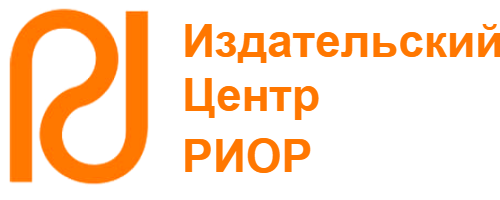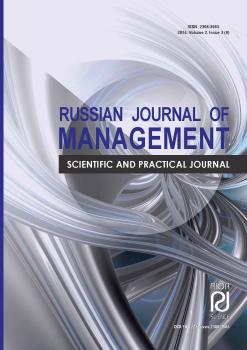Рязань, Рязанская область, Россия
ГРНТИ 06.75 Экономические проблемы организации и управления хозяйством страны
ГРНТИ 06.01 Общие вопросы экономических наук
ГРНТИ 06.39 Наука управления экономикой
ГРНТИ 06.52 Экономическое развитие и рост. Прогнозир-ние и планирование экономики. Экономич. циклы и кризисы
ГРНТИ 06.81 Экономика и организация предприятия. Управление предприятием
ОКСО 38.06.01 Экономика
ББК 652 Специальные и отраслевые экономики. Экономика межотраслевых комплексов
ББК 6529 Экономика предприятия (фирмы)
ТБК 774 Отраслевая экономика
В статье представлены результаты исследования процессов обеспечения экономической безопасности производственного сектора пенитенциарной системы Российской Федерации. Определены направления анализа приоритетных потребностей в обеспечении экономической безопасности национальной пенитенциарной системы. Контингент осужденных, содержащихся в пенитенциарных учреждениях России, структурирован. Обоснованы прогнозные изменения структуры и динамики численности отдельных категорий преступников, содержащихся в российских тюрьмах. Предложены направления совершенствования существующих методов и механизмов управления экономической безопасностью российской пенитенциарной системы.
пенитенциарная система, экономическая безопасность, производственный сектор, криминал, исправление, труд
The economic security of the production sector of the penitentiary system is an important condition for its stable functioning. The production sector is the material basis of food and clothing provision for the contingent of convicts. At the same time, the main means of correction of criminals are concentrated in the production activities of the bodies and institutions of the penitentiary system. Socially useful work, treatment and educational measures have a significant potential for use in the process of convicts’ attraction to work.
The problem of convicts’ attraction to labor in modern conditions is of particular relevance. It is largely determined by the need to improve the efficiency of socially useful labor as a means of convicts’ correction. It should also be noted that the processes of convicts’ attraction to labor are largely related to the programs of vocational training, retraining and advanced training of persons held in places of deprivation of liberty. This circumstances are determined by the fact that most of the convicts have partially or completely lost their professional skills.
At the same time, there are frequent cases when convicts did not possess such skills at all. In this regard, such means of correction as socially useful work, basic education and vocational training acquire a systemic relationship and require an appropriate systematic approach to their application.
Thus, all work on correction of convicts is not based on six separate and independent means of correction, the combination and intensity of which are determined by the type of punishment, the nature and degree of social danger of the crime committed, the personalities of convicts and their behavior. The process of correction is largely based on the systematic application of all means of correction, the focus of which is determined by the provisions of the current legislation.
The problem of ensuring the economic security of the Russian penitentiary system was developed in the works of Filippova D. [1; 2]. Significant are the developments of Pogudin O. and Chernyshov I. [3], Kozin M. [4], Deren I. [5]. Analyzed works were devoted to the issues of the organization of penitentiary production and its impact on the economic security of the national penitentiary system. Aspects of the impact of agricultural production on the processes of food security of the penitentiary system were studied in the work of Novozhilova J. [6]. In the works of Melyakina K. [7] and Ibragimov O. [8] the problems of the influence of state economy regulation and its impact on the development of the penitentiary system’s production sector were analyzed. We also note the significant interest in the subject of public-private partnership in the production sector of the penitentiary system, which was developed in the works of Kudrov A. [9] and Motin A. [10]. Despite the considerable attention paid in the national specialized scientific literature to this problem, a set of issues related to the economic security of the national penitentiary system requires further development.
Russian legislator defines the main purpose of correctional work in relation to convicts – as the formation of their respect for the person, society, labor, norms, rules and traditions of human coexistence and the promotion of law-abiding behavior. As can be seen, the issues of labor and attitude to it are among the main target parameters that determine the effectiveness of the institutions and bodies of the Federal penitentiary service of Russia.
The main directions of development of the production sector of the penitentiary system are not exclusively an economic problem. In spite of the fact that parameters of production and economic activity of establishments of the Federal penitentiary service of Russia are the economic indicators demanding the corresponding analysis with use of financial and economic tools, the main directions of development of production sector (including the strategic prospect) should be defined proceeding from:
- forecast of the dynamics of certain types of crimes (consider the growth of certain types of crimes to identify trends in the growth of persons convicted for these types crimes);
- features of application of a correction means complex to the criminals’ condemned for certain types of crimes;
- objective opportunities to ensure the employment of convicts in places of deprivation of liberty.
Analysis of official statistics shows a significant increase in the level of recidivism. Despite the fact that in 2018 was reached a historic low in the number of persons held in Russian places of deprivation of liberty (567789 people as of 01.12.2018), the number of recidivists, sentenced for the third time (and more), remained stable (coefficient of variation of the numerical range of prison population dynamics of this category of convicted persons in 2010 – 2017 counted 2.8%) and was on the level of 193,5 thousand people (fig. 1). It should also be noted that there has been a significant decrease in the number of convicts sentenced for the second time. The graph of the number of convicts, sentenced for the third and more times, as well as the graph of the convicts, sentenced for the first time, since 2013, actually synchronized.
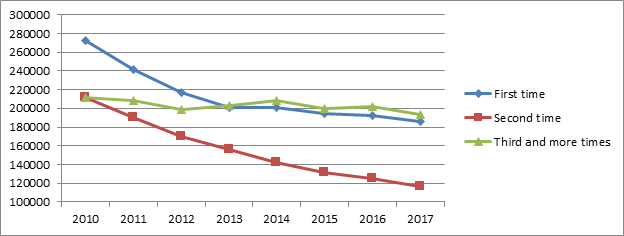
Fig. 1. The number of convicted persons in penitentiary establishments of Russia (structured according to the number of prior convictions)
If we analyze the structure of the contingent of persons held in penitentiaries according to the criterion of the number of convictions, the downward (positive) dynamics of the absolute number acquires a completely different meaning. (fig. 2) The decrease in the absolute number of post-penitentiary criminals in relative estimates has a significant growth dynamics and in 2019 has all the chances to reach 40% (of the total number of convicts).
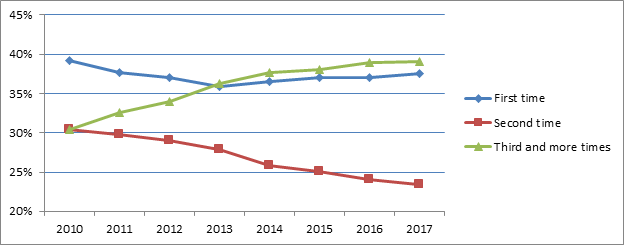
Fig. 2. Structure of the contingent of persons held in Russian deprivation of liberty places (number of convictions)
Statistical data on the structure of prison population in terms of the types of crimes committed by them is presented on the fig. 3. In 2010 – 2017 there was a decrease in absolute and relative indicators of the number of convicts for all types of crimes. The number of persons convicted for theft, robbery and brigandage decreased significantly (by 5-7% in 2010-2017).
However, there is a significant steady increase in the number of persons convicted for drug – related crimes (by 10% for 2010-2017). By 2017, 27.5% of all convicts in all Russian prison had served their sentences for this type of crimes. Given the peculiarities of this dynamics – in the coming years, this contingent of criminals will constitute the vast majority of the entire contingent of convicts in the country.
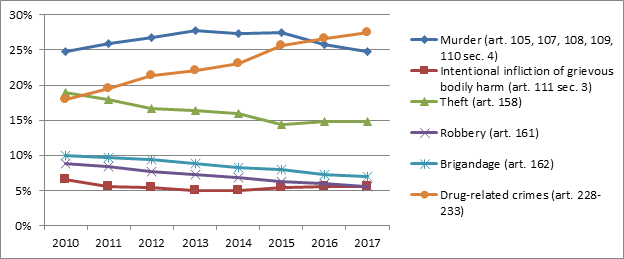
Fig. 3. Structure of the contingent of persons held in Russian deprivation of liberty places (types of crimes defined by the articles of the Criminal code of the Russian Federation)
Current level of convicts’ employment in Russian places of deprivation of liberty should also be taken into account. In modern conditions, the application of the rules of the compulsory labor of persons sentenced to deprivation of liberty is significantly hampered. The official employment rate of convicts has been declining in recent years and does not exceed 50%. In this situation, it should be said that socially useful work becomes not an obligation, but a privilege that allows to improve the conditions of serving the sentence (communication, change of situation, earnings). However, keep in mind the fact that in the face of rising minimum wage (in fact, a twofold increase over three years), even maintaining the current level of employment in places of deprivation of liberty requires a twofold increase in productivity. This, in turn, requires appropriate investments in the technical re-equipment of production units.
Thus, the programs of development of the production sector of the penal system should be developed taking into account the fact that today and in the medium term – most of the contingent of convicts will be persons convicted for the third or more times, most of whom are convicted for drug-related crimes. The negative dynamics in terms of the number of convicts in these categories has a clear trend, which indicates a significant bias.
Thus, the development of projects for the development of industrial production in the penitentiary system, taking into account the imperatives of increasing the level of economic security, should be carried out taking into account the long-term structural dynamics of the convict population. We should talk about the development of projects aimed on increasing the level of isolation of those convicted of drug-related crimes. At the same time, the growth of this kind of isolation should be accompanied by an increase in the employment of convicts in prisons, as well as an increase in the quality and productivity of their work. Thus, the subject of ensuring the economic security of the national penitentiary system is a complex, interdisciplinary problem that requires the development of fundamentally new tools aimed on solving a wide range of problems of an economic and criminological nature.
1. Филиппова Д.Г. Социально-экономические предпосылки формирования экономической безопасности уголовно-исполнительной системы // Человек: преступление и наказание. 2014. № 4 (87). С. 167-171.
2. Филиппова Д.Г. Пути создания системы экономической безопасности в органах и учреждениях уголовно-исполнительной системы // Берегиня. 777. Сова: Общество. Политика. Экономика. 2016. № 1 (28). С. 127-130.
3. Погудин О., Чернышов И. Производственный потенциал уголовно-исполнительной системы России: на пути к возрождению или к стагнации? // Проблемы теории и практики управления. 2014. № 2. С. 132-139.
4. Козин М.Н. Пенитенциарная экономика России в условиях санкционных рисков: целевые ориентиры и последствия // Международный пенитенциарный журнал. 2017. Т. 3. № 1. С. 16-21.
5. Дерен И.И. Тенденции развития отечественной экономики и ее роль в уголовно-исполнительной системе Российской Федерации // Проблемы современной экономики. 2016. № 3 (59). С. 75-80.
6. Новожилова Ж.С. Оценка факторов эффективности сельскохозяйственного производства УИС // Человек: преступление и наказание. 2015. № 2 (89). С. 150-155.
7. Мелякина К.Б. Экономическая деятельность государства в ежегодном послании президента России В. В. Путина 12 декабря 2013 г. как методологическая база реализации экономической функции ФСИН России // Человек: преступление и наказание. 2014. № 3 (86). С. 100-104.
8. Ибрагимов О.А. К вопросу о развитии системы унитарных предприятий уголовно-исполнительной системы в новейшей истории России // Уголовно-исполнительное право. 2015. № 2 (20). С. 99-104.
9. Кудров А.А. Интеграция, как направление совершенствования социально-экономического механизма управления трудовыми ресурсами в уголовно-исполнительной системе // Транспортное дело России. 2012. № 6-3. С. 12-14.
10. Мотин А.В. Взаимодействие предприятий УИС с предпринимательскими структурами как фактор развития реального сектора экономики // Управление экономическими системами: электронный научный журнал. 2012. № 4 (40). С. 17.
